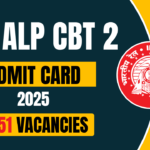
The US Department of State’s Visa Bulletin for May 2025 has brought bad news for Indian citizens applying for H-1B visas and green cards, especially under the EB-5 (Employment-Based Fifth Preference) category. According to the bulletin, the EB-5 Unreserved category for Indian applicants has moved backwards by more than six months—from November 1, 2019, to May 1, 2019.
This means fewer people are now eligible, and the waiting time to get a green card has become longer. This delay is very different from the situation for Chinese applicants, whose EB-5 cutoff date is still the same, January 22, 2014.
According to the bulletin, the main reason for the setback is the high number of applications from Indians, along with more applications from other countries as well. The bulletin reads that the cutoff date for Indian applicants had to be moved back to make sure the number of green cards given out stays within the yearly limit for 2025.
The EB-5 visa program is meant for immigrant investors and has special slots reserved for those who invest in rural areas, high-unemployment zones, or infrastructure projects. However, most applicants, especially from India, apply under the general (unreserved) category, which has led to high demand and a quick exhaustion of available visas, causing the cutoff date to move backwards (retrogression).
The “Final Action Dates” in the monthly Visa Bulletin are very important. They tell the US immigration authorities (USCIS) when they can process and approve green card or visa applications. If an applicant’s priority date (the date they applied) is earlier than the date listed in the bulletin, they are allowed to move forward with their application.
For Indian applicants, most employment-based visa categories have seen little or no progress. The only small improvement was in the EB-3 category (for skilled workers and professionals), where the cutoff date moved forward by just two weeks, now set at April 15, 2013.
The EB-1 category (for top-level professionals) remained unchanged on February 2, 2022, and the EB-2 category (for advanced degree holders) was also unchanged on January 1, 2013. These dates have also stayed frozen for Chinese applicants, showing how crowded and backlogged these categories have become.
The Visa Bulletin also notes the visa limits for 2025:
- 226,000 visas for family-sponsored immigration
- At least 140,000 visas for employment-based immigration
- Each country can get no more than 7% of the total—25,620 visas a year
- Dependent territories are capped at 2% or 7,320 visas.
This update comes at a time when immigration is again a hot topic in US politics. Since Donald Trump returned to the White House in January 2025, his administration has revived the “America First” agenda, with a strong focus on tightening immigration laws.
Though the main focus is on stopping illegal immigration, the new policies are also affecting legal immigration, including skilled workers and investors using programs like H-1B and EB-5.
You might also be interested in – Over 7,000 Indian students and visitors stayed past their US visa limits in 2023



